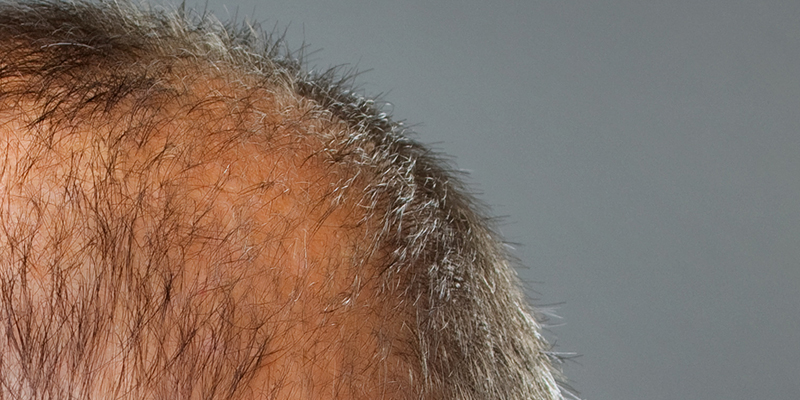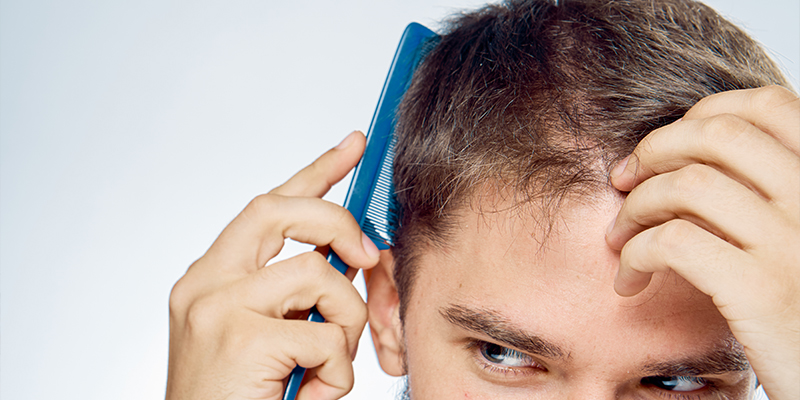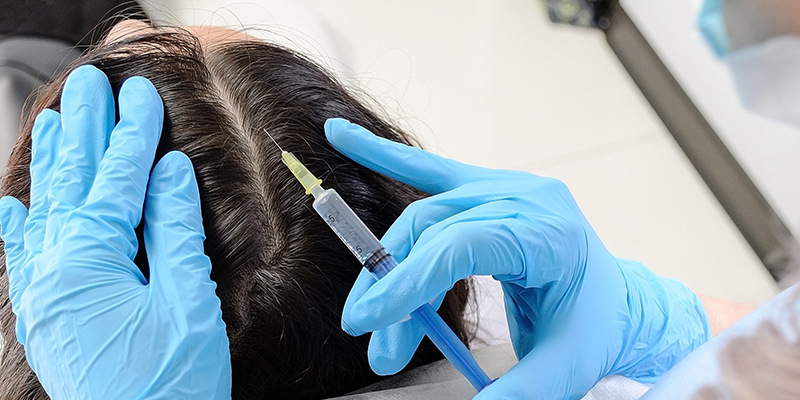Cicatricial Alopecia: Causes, Types, Symptoms & Treatments
Hair loss is a common condition affecting both men and women. If hair loss begins to lead to balding, then it indicates the presence of a severe hair disorder. Scarring Alopecia is a rare set of conditions faced by individuals that can lead to permanent balding experienced by 3% of individuals suffering from hair loss. Since it is prevalent in both men and women of all ages and ethnicity, early diagnosis helps in preventing potentially permanent damage.
What is Scarring Alopecia?
Scarring Alopecia, also known as Cicatricial Alopecia, is a condition characterized by a loss of hair accompanied by scarring. It is a rare disorder that results in the permanent destruction of a hair follicle while replacing it with scar tissue causing permanent hair loss.
What Are The Different Types Of Scarring Alopecia?
There are two major types of Scarring Alopecia –
- Primary Scarring Alopecia – The hair follicle is damaged and replaced by fibrous tissue destroying the stem cells in the hair root. The follicle is the main target and is the originating point of the disease. Primary Scarring Alopecia is grouped into three categories; lymphocytic, neutrophilic and mixed cicatricial Alopecia. These further include frontal fibrosing Alopecia (FFA), lichen planopilaris (LPP), central centrifugal Alopecia (CCCA), pseudopelade and folliculitis decalvans (FD).
- Permanent Scarring Alopecia – Also known as secondary cicatricial Alopecia, this condition results in the damage of the hair follicle due to external reasons. These may include damage caused by straightening irons, hot combs, chemical straightening, radiotherapy and accidents involving trauma to the scalp.
Must Read: What Are The Different Types Of Alopecia?
What Are The Causes Of Scarring Alopecia?
The exact causes of Scarring Alopecia are still not known. Almost all these hair loss conditions target the sebaceous gland and stem cells in the hair follicles, which often leads to the permanent loss of hair.
The causes are not likely to be linked to genetics. Unlike Non-Scarring Alopecia, it is possible to suffer from more than one kind of scarring hair loss at a time and is not contagious. Some probable causes of Scarring Alopecia include –
- Destruction of hair follicle stem cells
- Inflammation due to injuries, tumours or burn
- Some specific genetic factors like in CCCA affect several women of African ancestry of the same family
- Altered lipid metabolism
What Are The Signs & Symptoms Of Scarring Alopecia?
Since Scarring Alopecia can result in permanent hair damage, it is recommended to receive treatment at an early stage. You should look for the following signs to identify this condition –
- Itching, burning, pain and tenderness of the scalp
- Inflammation of the scalp and hair follicles
- Thinning of hair strands
- Formation of scales on the scalp
- Raised blisters (can also have pus formation)
- Redness or decreased pigmentation on the scalp
- Crusting
Must Read: What Are The Early Signs and Symptoms of Hair Loss
How To Diagnose Scarring Alopecia?
The diagnosis of Scarring Alopecia starts with a scalp biopsy. The biopsy of the scalp helps in diagnosing the exact cause of this hair condition with the help of several findings that include the location of scalp inflammation, type of inflammation present, its amount, and other unwanted changes. The information obtained from the biopsy helps dermatologists determine the degree of activity for the appropriate treatment of Scarring Alopecia.
How To Treat Scarring Alopecia?
The final stages of Scarring Alopecia are often marked as an irreversible condition. Though, you can get a Scarring Alopecia treatment at an early stage to prevent it from spreading and heal the surrounding areas. Since the treatment strategies are different for every sub-type, it is best to discuss all options with your dermatologist to proceed with the appropriate treatment option –
- Oral and Topical Medicines – Doctors usually start cicatricle alopecia treatment with various oral and topical medication. There are specific serums and shampoos that These medicines have anti-inflammatory agents that heal the follicles. Minoxidil can be used to stimulate small unscarred hair follicles remaining to restore hair regrowth. Apart from topical serums, there are a few oral medicines that can improve the quality of your scalp by strengthening the blood vessels underneath.
- Hair Restoration Surgery – As cicatricial Alopecia is a severe condition, it demands more dedicated solutions. If the disorder has been inactive for one or more years, then patients may consider opting for hair restoration surgery. It is an invasive approach, where hair strands are removed from a donor site, which is then transplanted to the affected area. FUE (Follicular Unit Extraction) harvesting is recommended to treat scarring hair loss.
- Scalp Reduction – Scalp reduction is another invasive approach that can be implemented to treat Scarring Alopecia. The infected part of the scalp is removed, and the adjacent skin is stitched together. For instance, if you are suffering from scarring hair loss at the top of your scalp, then the skin will be pulled from the sides and stitched. Like other surgical treatments, this method also has a few side effects and can cause the formation of minute scars.
Must Read: What is PRP Hair Loss Therapy?
PRP For Refractory Scarring (Cicatricial) Alopecia
PRP treatment for refractory scarring hair loss is recommended if the condition is not in an advanced stage. In cases where hair loss has reached a more progressive stage, it leads to a condition known as Refractory Scarring Alopecia where the condition may not respond to oral or topical medication. A specialized approach is required to treat such cases of Scarring Alopecia. PRP or platelet-rich plasma therapy is a non-invasive technique for hair regrowth. As the name suggests, platelet-rich plasma is developed by extracting the patient’s blood sample, which is processed through a centrifuge. The activated plasma is then injected into the upper layer of the scalp using a micro-needle. It nourishes the follicles and preserves the remaining hair leading to hair regrowth and restoration, naturally. Additionally, oral and topical medication may also be prescribed by your dermatologist to supplement the treatment.
Must Watch
However, PRP treatment is not recommended for every patient with Scarring Alopecia. You should get a comprehensive scalp examination performed by a dermatologist to know if a PRP treatment can benefit you.
Our certified subject matter experts do extensive research and collate facts from reputed scientific journals and international studies to create informative and engaging articles related to all your dermatology concerns. They strive to help you decipher medical jargon, distinguish fact from fiction and overcome paranoia. Our qualified medical board or expert panel goes a step further to verify these facts based on their rich academic knowledge, vast clinical experience and critical industry insights to ensure you consume only medically accurate content that empowers you to make informed decisions about your hair and skin-care treatments and weight management. Check out our Editorial policy for further details
https://www.ncbi.nlm.nih.gov/pmc/articles/PMC3855115/https://rarediseases.org/rare-diseases/cicatricial-alopecia/
https://en.wikipedia.org/wiki/Scarring_hair_loss

















